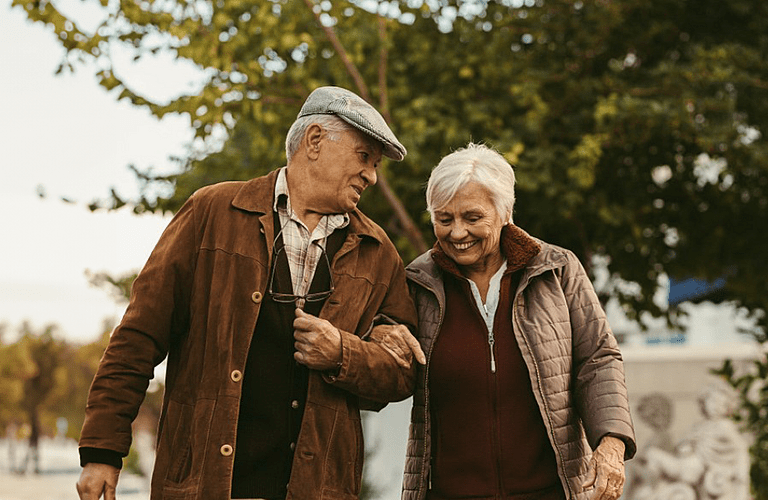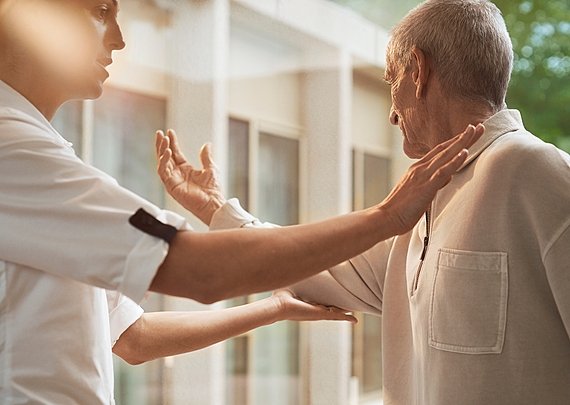192 Sloane Street, London SW1X 9QX

Strike the Right Balance: 5 Tips for Strength and Stability
As we age, building and maintaining our strength becomes increasingly important. It allows us to continue engaging in activities that enrich our lives, such as socialising, pursuing hobbies, and remaining self-supported. Samantha Thom, an independent physiotherapist working with KYN, has created some helpful tips you can try at home. These tips will help you enjoy a balanced life and stay agile at any age.
Samantha Thom brings over 20 years of expertise, working with older people to improve their balance and strength. She helps residents re-engage with exercise and even walk again after they may think they couldn't.
Top tips from Samantha Thom, Independent Physiotherapist at KYN.
1. Balance Exercises: When it comes to doing exercises by yourself at home, there are a lot of options to choose from. To begin with, here are Samantha's top five exercises that she recommends at KYN. Repeating each exercise 10 times can help naturally improve your balance. You can modify and adjust these exercises based on your own abilities and fitness level.
- Sit to Stand: While sitting in your regular chair, first ensure that your feet are flat on the floor and brought back towards the chair. From this position, slightly lean forward and then stand up, using your hands on the arms of the chair if needed, although try to use them as little as possible. Hold onto your walking aid if required, and stand up straight. To sit back down, ensure that the back of your legs are touching the chair, and slowly lower yourself back into it. You can use your hands on the arms of the chair to help control this movement.
- Heel Raises: To perform this exercise, stand upright while holding onto a support with one or two hands as needed. You can use the kitchen sink as a support since it provides a good grip. Next, slowly raise your heels off the floor, shifting your entire weight onto your toes. Hold this position for 3 seconds and then slowly lower your heels back to the floor with control.
-
Toe Raises: Stand tall while holding onto support, raise your toes and shift your weight onto your heels. Avoid sticking out your bottom. Hold for 3 seconds and then lower with control.
-
One Leg Stand: Stand close to your support and hold it with one or two hands as needed. Balance on one leg, keeping the knee of the support leg slightly bent and your posture upright. Hold this position for 5-10 seconds, and then repeat it with the other leg. As you practice this exercise, try to rely less on your hands for support.
-
Heel-Toe Stand: If you are using support with both hands while performing the one-leg stand exercise above, do not attempt this one. To perform heel-toe stand exercise,stand upright with one hand on your support. Place one foot in front of the other to form a straight line. Look straight ahead, lift your hand off the support if possible while ensuring it is still within reach, and maintain your balance for 10 seconds. Bring your front foot back to hip-width apart and then place the other foot in front, repeating the process for another 10 seconds on this side.
2. Fitness Classes: Consider trying fitness classes such as yoga and pilates. Yoga can improve your meditation practice while enhancing flexibility and balance. Pilates is effective for post-injury recovery, posture, and core strength.
3. Get Up & Out: Sam encourages people to go for walks whenever they can. As an older person, experiencing a fall can be daunting, and it might make you hesitant to get moving again. However, not pushing yourself can lead to social isolation and other health-related problems. You will reap the rewards once you take that first step! You can take it further by exercising, which is excellent for your mental health. It has been proven that feeling good physically can help you feel better mentally too.
4. Two-for-One Exercises: It's important to build your strength at any age. Whenever you move a limb or work on balance, you're actually strengthening your muscles. One way to keep your bone density higher and improve strength is to add small weights to any exercise or do resistance training. Strength training can also protect your joints from injury and contribute to better balance. If you're unsure about which exercises are appropriate for you, it's best to contact a physiotherapist or your local gym for advice.
5. Confidence: Maintaining balance is crucial for building confidence, especially in older people. When you feel stable on your feet, you are more confident to move around, leave the house, and socialise, which can significantly improve your mental wellbeing. Doing small balance exercises can help you achieve this and, as a result, lower the risk of falls.
At KYN Care Homes, Samantha Thom works with residents to offer tailored physiotherapy support. She strives to empower KYN residents, helping them sustain their strength, enhance balance, and foster independence through personalised exercises and attentive care.

